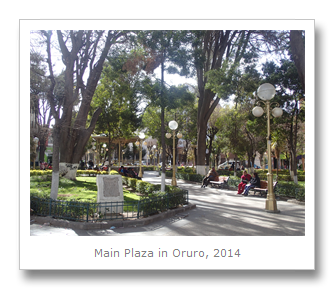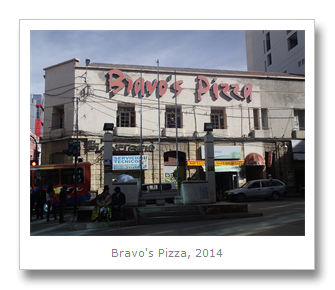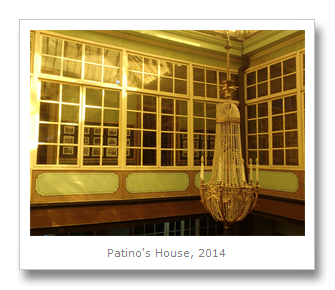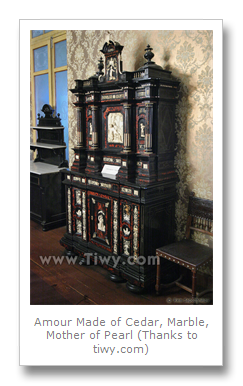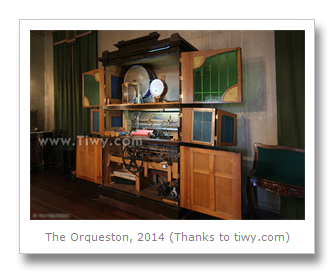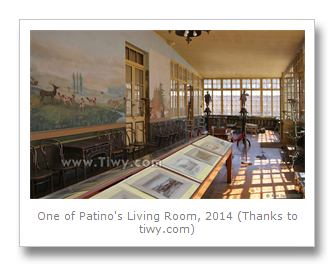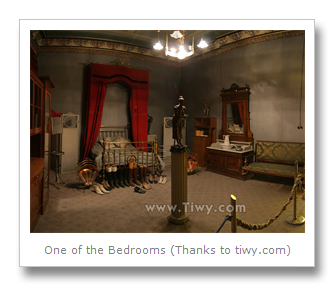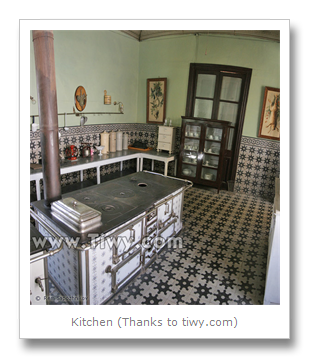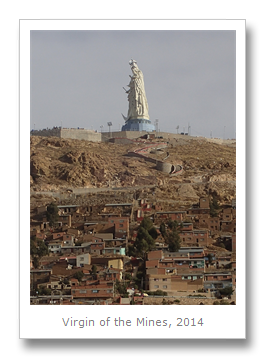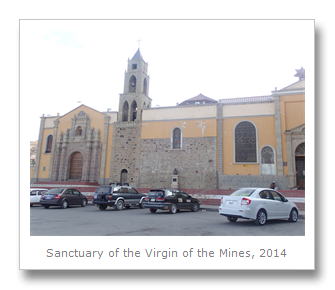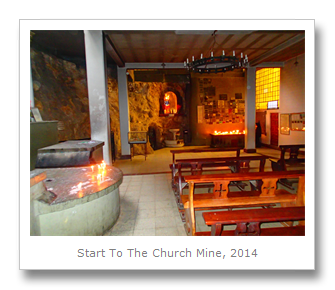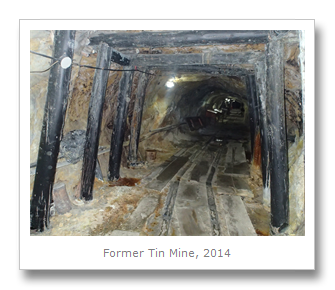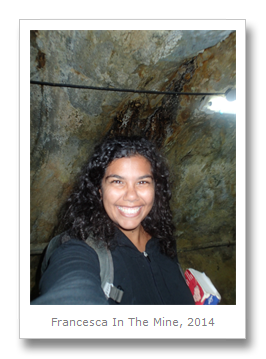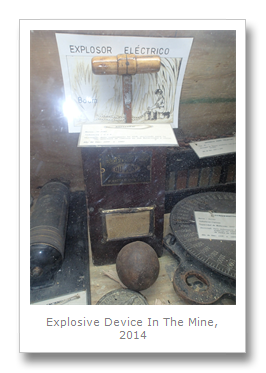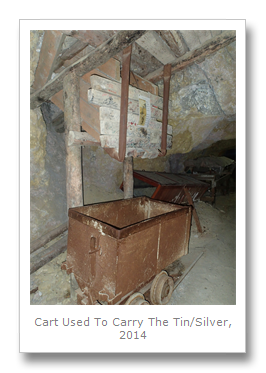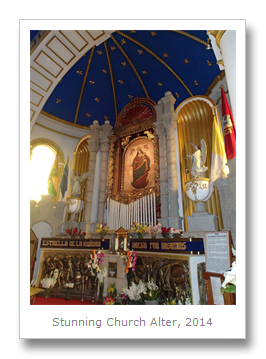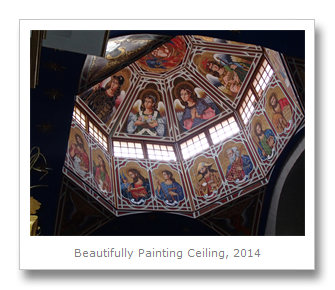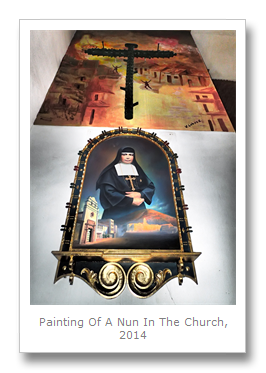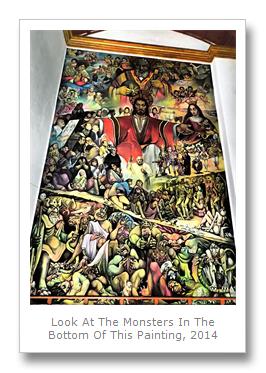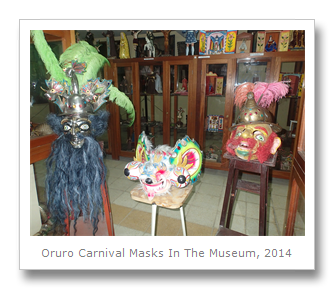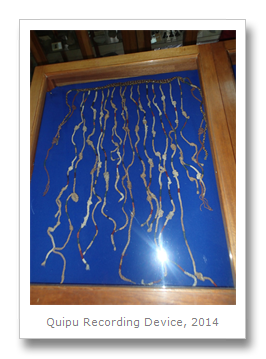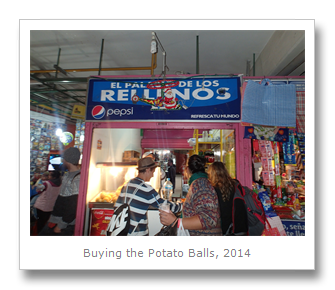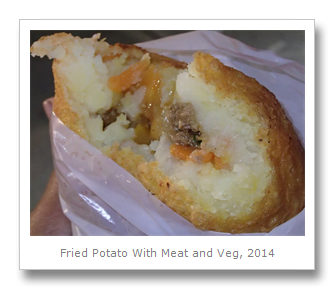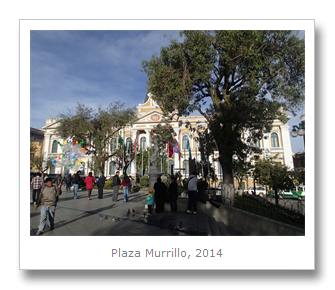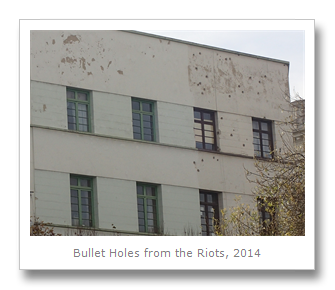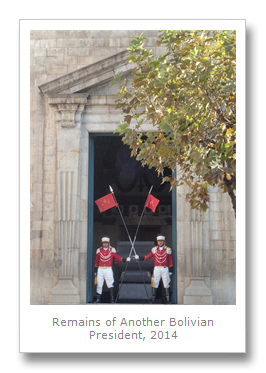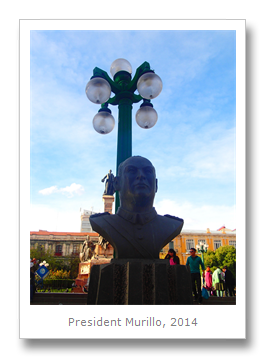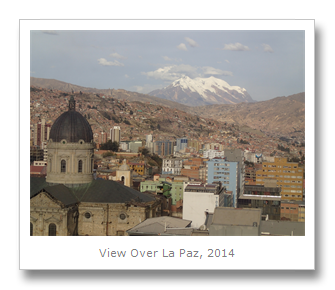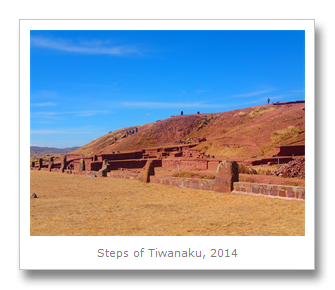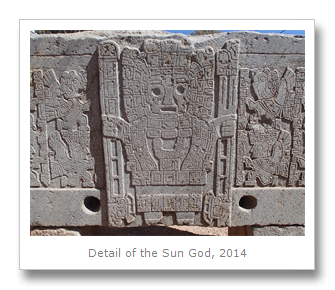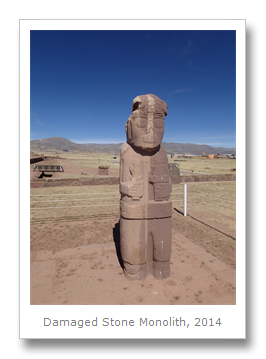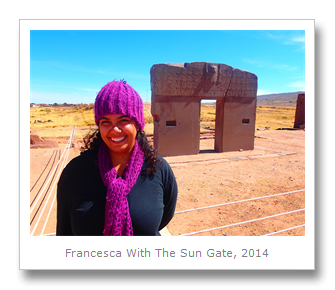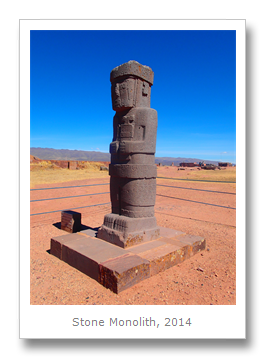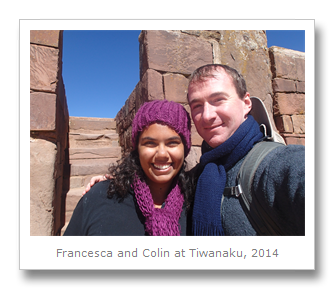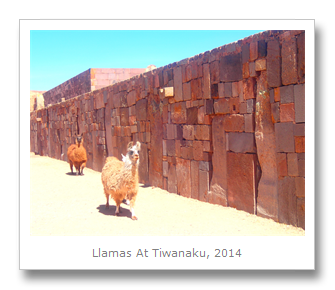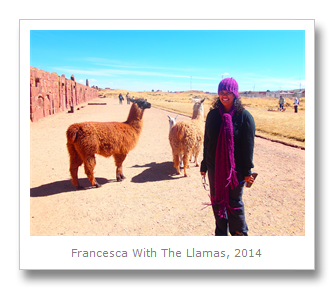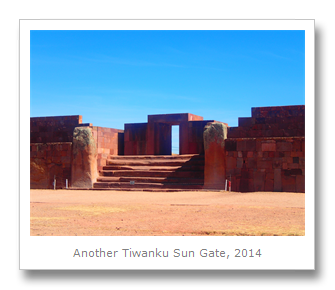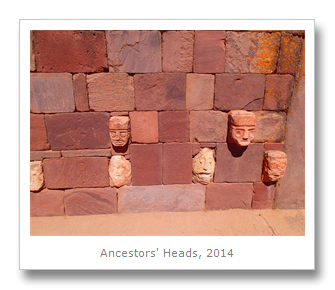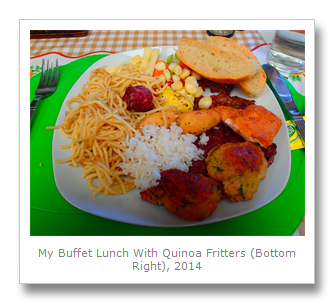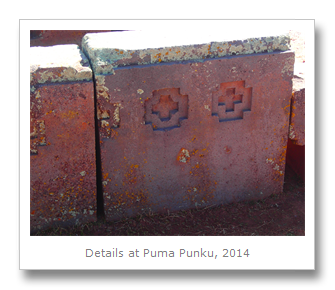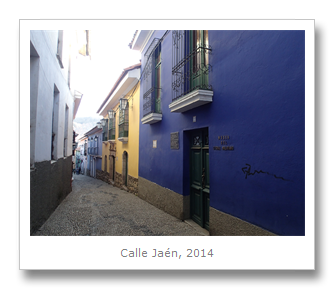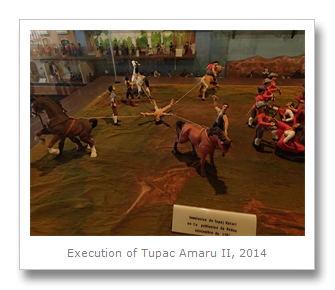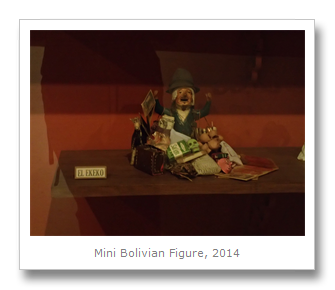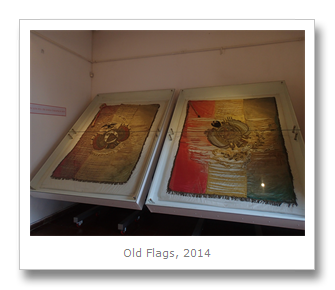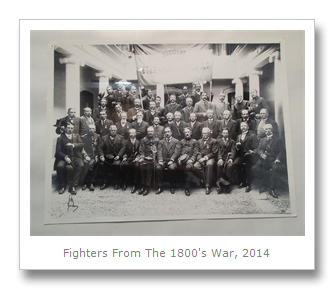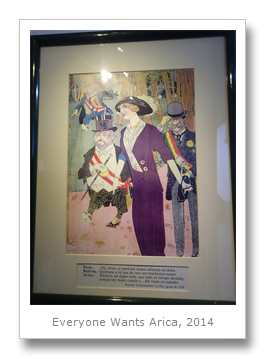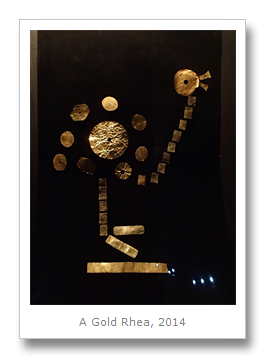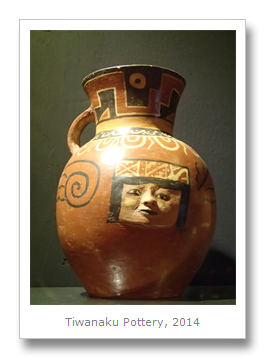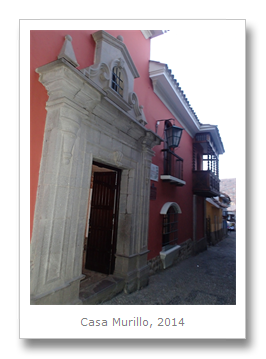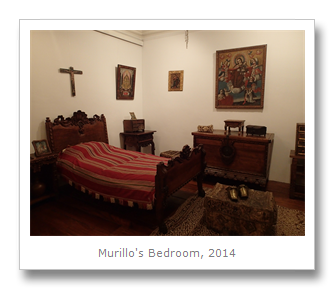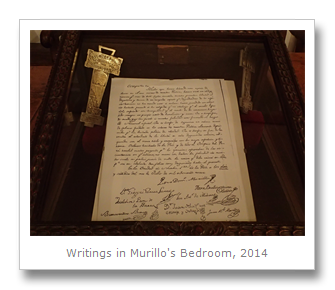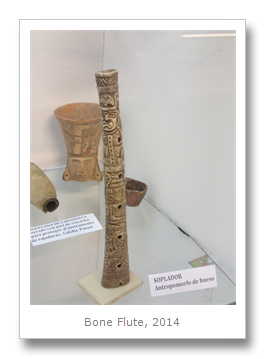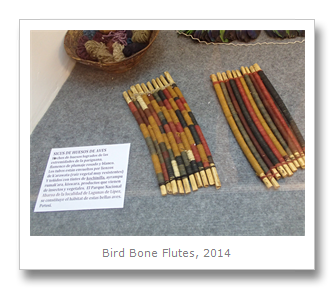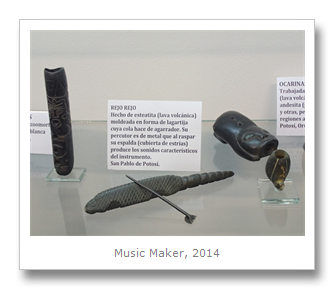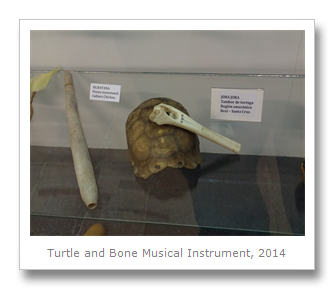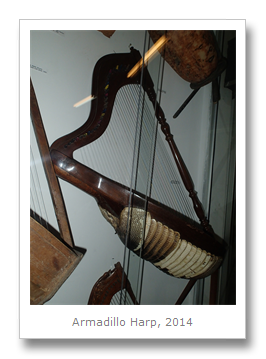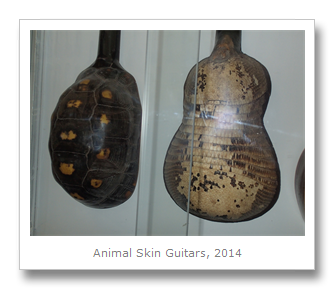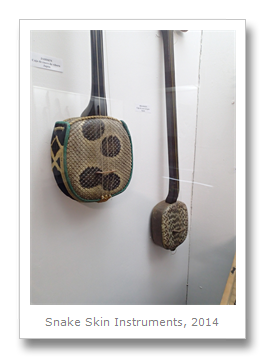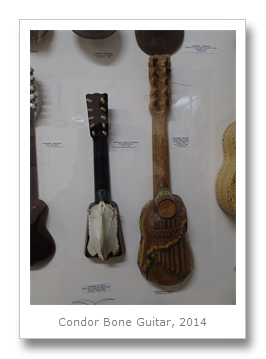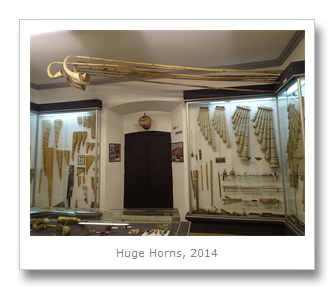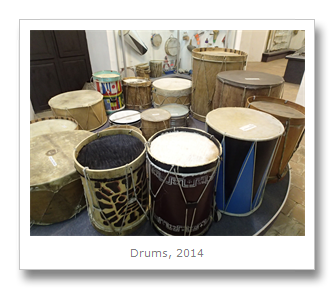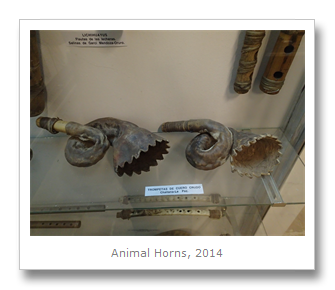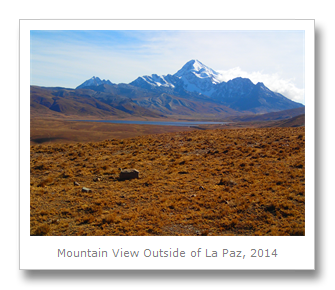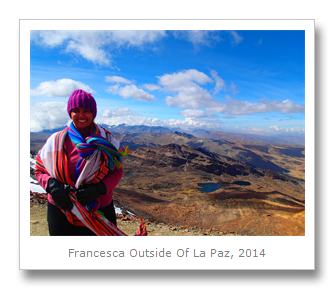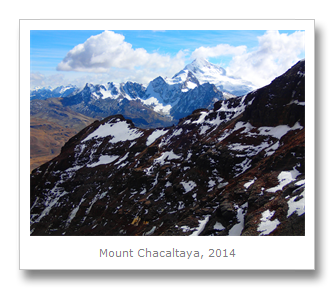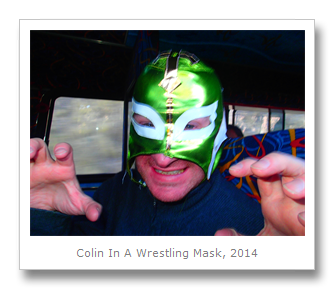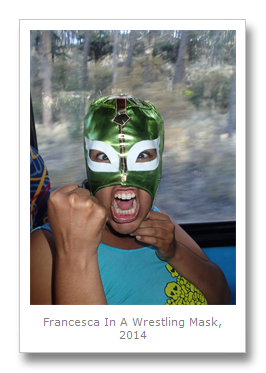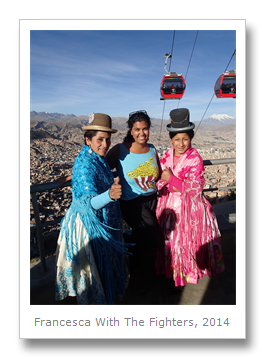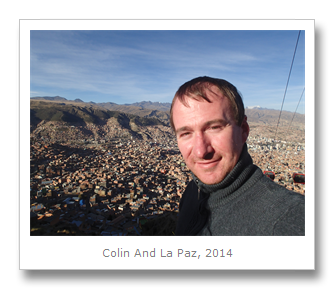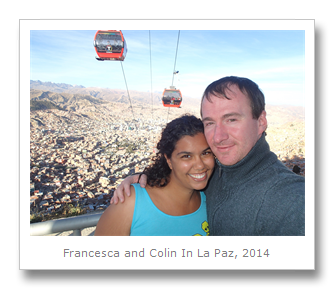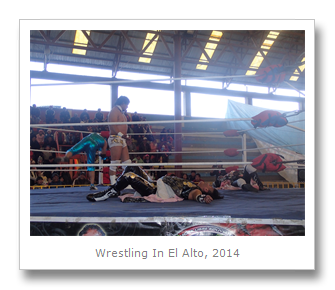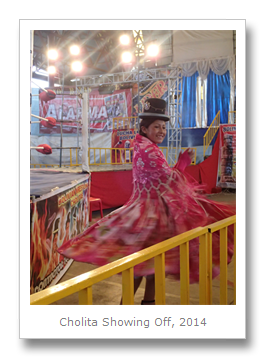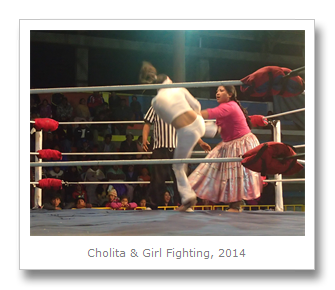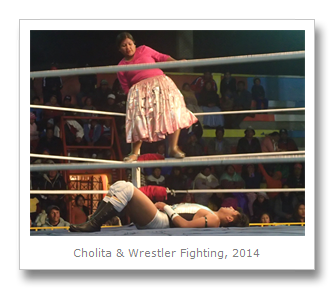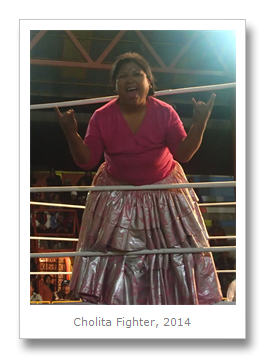On June 24th we entered La Paz (which seemed to take forever) around nearly midnight. We ended up settling for the nearest hotel to the bus station, pretty cheap ($130 Bolivianos) but pretty far away from the main ‘action’ of La Paz called Tambo de Oro. The next morning we headed out with a ton of laundry we dropped off, then grabbed some breakfast at a Swiss breakfast joint.
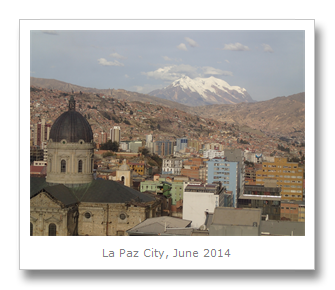
Our first stop for the morning was the Coca Museum. This museum took us through the history of coca from 2500 BC until the present day struggle between the legal coca leaf industry and the black market cocaine industry. The museum spoke about the religious and traditional use of coca leaves, which have been found on mummies in Northern Peru. Because of their ability to increase alertness and help with altitude sickness, they had been given an important place in the Altiplano religious concepts and thought of as a gift from the gods. The leaves have their more ‘down-to-earth’ uses as well, serving to suppress the appetite of Bolivian mine workers. Interestingly, coca leaves have loads of nutritional value providing their chewers with lots of vitamins with very few calories… though they do also give the chewer very distinct breath.
The museum also had a section on the illegal trade of coca leaves and processing them into cocaine, which happens in the jungles of eastern Bolivia such as the one we just visited, Currasco National Park. The ongoing ‘War on Drugs’ has been given a blow recently because of Evo Morales’s decision to kick the USA’s Drug Enforcement Administration (DEA) out of Bolivia. Being a former coca grower himself, Morales claims to be taking steps to limit illegal coca but from what we could hear (and see) while in Bolivia the growing is out of control and the risk to the environment, animals, and humans is still getting worse.
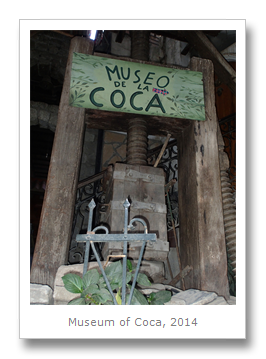
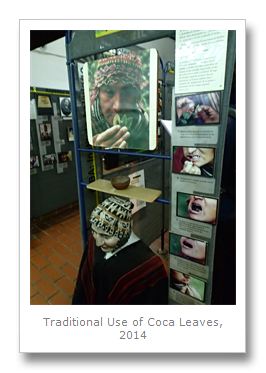
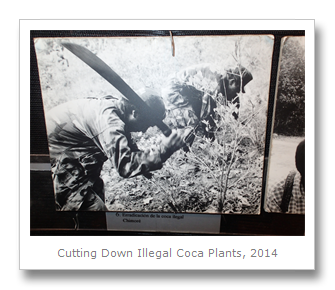



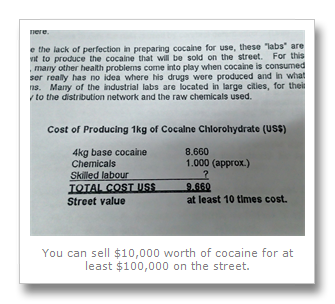
Once we finished at the museum, Colin and I walked down to San Francisco Church. There was some kind of celebration going on at the church when we got there, so we slipped quietly inside to admire the baroque architecture and the mirrors that adorned the altarpiece. We heard on the Red Caps walking tour we took later that day that supposedly these mirrors were installed to help convince the indigenous Bolivians to attend church. The indigenous people believed that their souls would leave their bodies when they got injured and they had to ‘call’ their souls back to their bodies. The church convinced the indigenous people that calling their souls back wasn’t working because they were getting stuck in the church mirrors. The church claimed that by coming to services at the church the indigenous people could maintain a relationship with their souls and keep them safe. When we exited the church we took a few pictures of the celebration and headed to lunch.
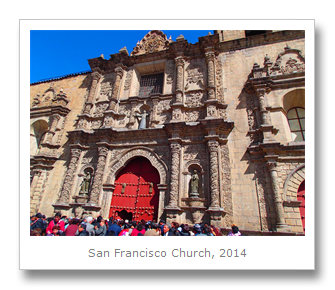
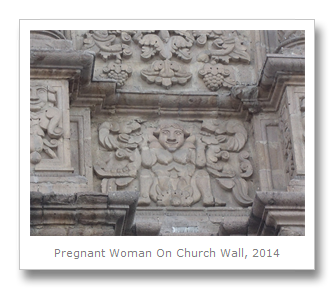
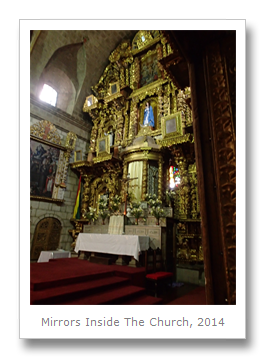
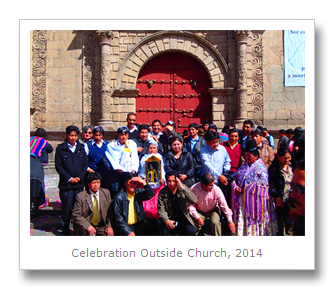
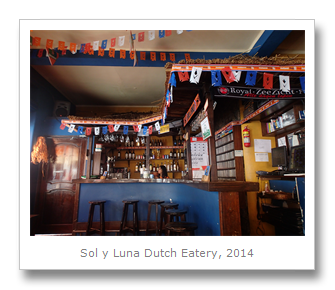
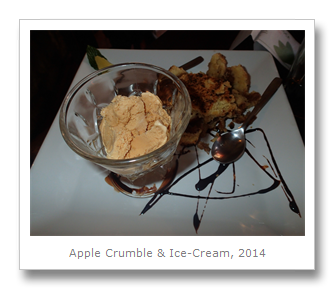
It was nearly noon now and time for our free walking tour with Red Caps. We met our tour guides at the San Pedro Plaza and they began by telling us about the nearby former military fortress which is now a prison which various sections ranging from the standard to ‘5-star’ areas.’ The San Pedro Prison is known for its drug trafficking. One foreigner ended up inside the prison for trafficking drugs, and actually started up tours for foreigners inside the prison which ran until a few years ago! Unfortunately during one tour some women ended up getting raped inside the prison. Now no tourists are allowed to enter the prison, but some still try.
Moving on from the prison we were led through the Rodriguez Market, which didn’t have much going on because Wednesday is the ‘Sunday’ of the market. There were a few ladies selling fruit and veg but that was it. Our guides did tell us some interesting things about market culture, however. Apparently your market lady (known as a casera or caserita) – usually the same woman your mother and grandmother went to – knows all about your life and becomes a friend. The benefit of this is that she saves the best produce for you and sometimes gives you a little extra. It is not customary to haggle over food prices at marketplaces, but it is OK to ask for your ‘little something extra’ which is called your yapa.
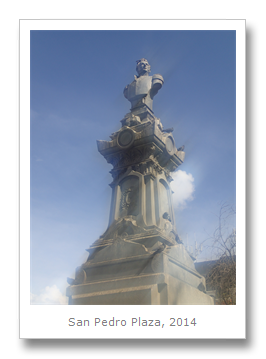
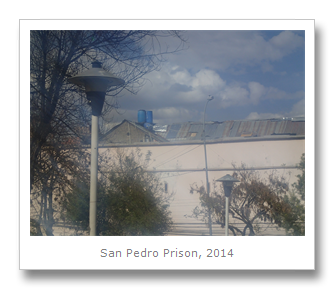
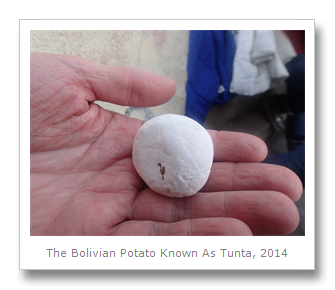
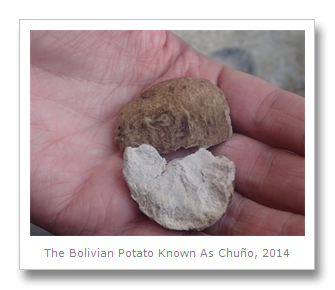
The next market we went to was the most popular stop of all – the ‘Witches Market.’ Here we saw items used by the Aymara as offerings to Pachamama, such as llama fetuses and sea creatures which are burned together with coca leaves and colorful candies. These offerings are necessary whenever someone builds a new house, and there are (seemingly unfounded but after being in Bolivia for 3 months, I wouldn’t be shocked) rumors of human sacrifices being required before building skyscrapers. Also sold here are sketchy drugs such as love potions and a Viagra-like pill. Men started dying due to heart attacks from the stimulant and after an investigation it was discovered that the pills were a dose meant for horses – not humans. Unfortunately a weaker liquid form of the same drug is STILL being sold in the market! Don’t buy anything…
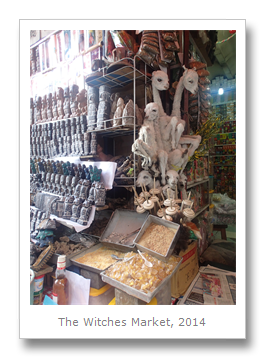
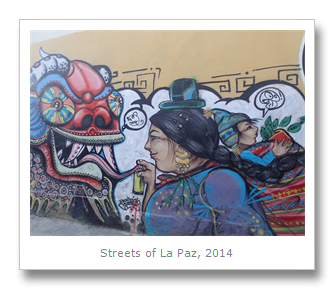
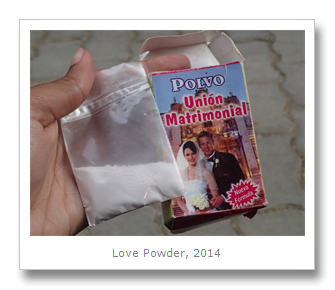
After a quick stop back at San Francisco Church (which I mentioned before) we headed to a snack market which had loads of interesting local food in it, along with some fruit smoothies to try. Colin and I ate a fried potato ‘ball’ which had meat and veg in it which was heavy but delicious.
One of the final stops was Plaza Murrillo, the center of Bolivian politics and the location of numerous protests (and 190 changes of government since Bolivia’s creation as a nation) and the Presidential Palace. Here we sat down on some steps and our guides told us a few stories. One of these was how President Pedro Domingo Murillo (1759-1810) was captured and hung in the plaza, which is how the plaza got its name.
The tour guides took us up to a viewpoint at the top of a 5-star hotel, Hotel Presidente, where the company Urban Rush allows people to rappel out of the window while being taped. We watched a few people go down while sitting and discussing some of the ridiculous things said by current President Evo Morales. During a summit on climate change Morales basically said that eating chicken makes you gay and drinking coca-cola makes you bald. He think tried to retract these statements once the press got wind of them and started making a big deal out of them. Here is one of the quotes from the 2010 Time magazine article online below:
"When we talk about chicken, it's pumped full of female hormones," Morales said, "and so when men eat this chicken, they stray from being men" (literally tienen desviaciones en su ser como hombres in Spanish). The comment went over non–Spanish speakers' heads, so it wasn't until sundown that it rippled its way through the 35,000-participant gathering. By the next morning, the international press had gotten wind of it, Bolivian newspapers had plastered it on their front pages and Spain's national LGBT federation had issued a statement calling the comment "homophobic." (Time magazine article, 2010)
Morales and his antics was the last thing we discussed on the tour. We returned to the hotel to rest up for our day trip the next morning.
The following morning Colin and I were picked up early by Buho Tours to go out to the ruins of Tiwanaku. Tiwanaku is both the location of a former city and the name of a former civilization (existing from AD 300 to 1000) from the area. By the time the Inca, and eventually, the Spanish reached the city it was already in ruins and many of the blocks from the buildings had been taken by locals to use in other structures. First was a giant stone monolith known as the Bennett monolith, named after the archaeologist Wendell Bennett, who discovered it in an underground temple at Tiwanaku. This monolith which had been partially destroyed during riots in La Paz, where it stood. Fantastically detailed, this structure was beautiful to look at, especially when paired with the images of its details on a nearby wall.
A small museum took us through the history of the region and its unique facts, such as its 5000 different varieties of potatoes. There were numerous pottery pieces which represented big cats such as pumas in the collection. There was a monolith in the museum which had its nose cut off and a Christian cross carved into it, done by the Spanish once they discovered the site. As we walked through the museum we learned about three of the different classes in the Tiwanaku society: the condor class (the administrators, who were messengers of the gods), the puma class (the warriors) and the llama class (the priests or shaman.)

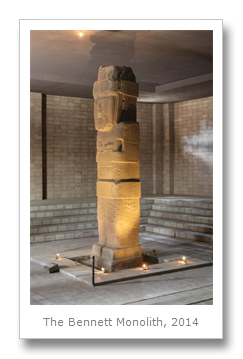
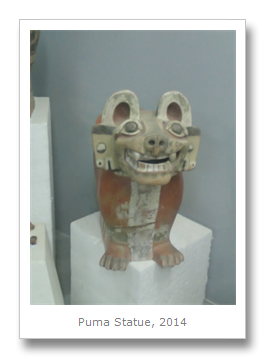
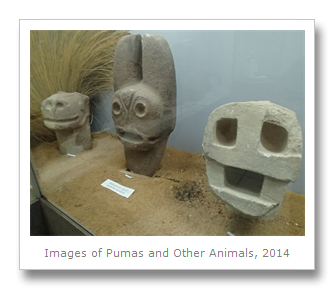
Our group walked out to the ruins themselves next, which were still buried in large part under dirt and rubble. Although 60% of Tiwanaku is said to have been lost, there are a few interesting pieces that remain. One of these is the infamous sun gate. The sun gate was originally found broken and on the ground, but it is now placed upright… although likely in a different spot than where it was originally. Another part of the site contains 175 stone faces which are thought to represent ancestors. There were irrigation channels for the rain around the temples.
We took a break for a huge buffet lunch of llama, chicken, colorful potatoes, and the most delicious (and only) quinoa fritters I’ve ever tasted. Someone teach me how to make these yummy things!
After lunch we paid a short visit to another nearby site called Puma Punku which translates from Aymara into ‘The Door of the Puma.’ This site was even more in shambles than Tiwanaku. There is evidence that the floor was painted red, green, and blue.
We returned from Tiwanaku and the following day I went to explore 5 different museums. These museums were located along Calle Jaén, La Paz’s most beautiful colonial street. The first 4 museums are under a joint ticket and I decided to see them all in one go that afternoon.
The first museum was the Museum of Costumes. This museum had numerous traditional outfits in it worn by Bolivian women. There were also miniature scenes of different historical moments in Bolivia’s history.
The second museum was called the Museo del Litoral, and it was about the coast lost by Bolivia to Chile during the war of the 1800’s. This museum isn’t too big, containing just some old maps showing where the border used to be with Chile.
The third museum was the Gold Museum with stunning outfits and accessories made out of gold belonging to the Pre-Columbian and Tiwanaku cultures. There were also loads of Tiwanaku pottery and artwork to admire as well. The show piece of the museum was a gold outfit found in a tomb excavated in Cochabamba which included gold head pieces, arm pieces, belts, skirts, breast plates, jewelry, etc.
The final museum of the group was called Casa Murillo and it was the former residential house of President Pedro Domingo Murillo. The house included loads of furniture from the Murillo family, as well as colonial art, textiles and other household items.
After visiting the group of museums I decided to go to the musical instrument museum down the street. Once I arrived in the museum I started exploring the numerous rooms, which were filled with all different kinds of indigenous musical instruments. The first few rooms contained loads of different kinds of panpipes, some of the pipes were erotic in nature. The next group of instruments were charangos, some made out of different animals such as armadillos, turtles, even condor and other bird bones. There were drums made out of various animal skins.
After the museums I decided to take a day trip to the city of Oruro, so check out that standalone blog! Back to things from La Paz…
Colin and I decided to take another daytrip with Buho Tours, this time out to Chacaltaya, a mountain at 5300 meters in altitude, then to a place called Moon Valley afterwards. It was a long drive up to Chacaltaya Mountain at 5,300 meters. The glacier of the mountain has melted substantially over the last 30 years and while the area used to be a ski resort it can no longer function as such because of the melting. As we climbed the air got thinner and thinner and while I didn’t suffer much from the change in altitude, Colin really felt the effects. Once we got to the top I climbed even further to reach the very top of the mountain and took a bunch of photos!
Driving back down the mountain and through the city, we headed on to Moon Valley. This area has an eerie look about it because of the erosion caused by wind and rain against the large clay columns that were everywhere. There was a path we walked along together around the valley which showed us some interesting formations and birds.
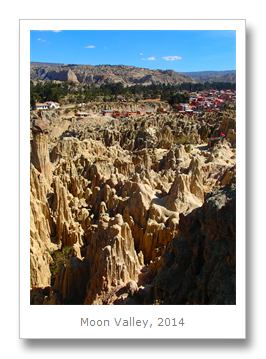
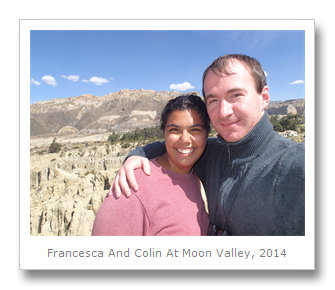
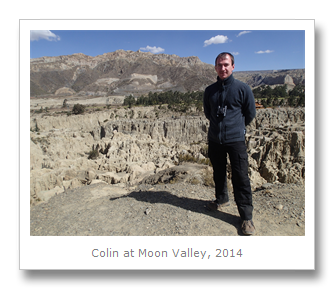
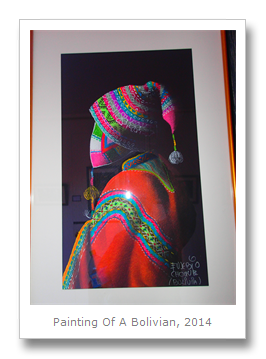
The next next day, Sunday, Colin and I walked around the Sunday market and got some food to eat at a British pub. Just after the food we went to the tour agency and joined the pretty big group to the wrestling match. Colin answered some Bolivian history trivia questions correctly while on the bus and won us a silly wrestling mask to play around with. Our bus would take us to El Alto to watch extremely fake wrestling shows, but with included popcorn and soda so it was good for a laugh! These wrestling matches are called ‘Cholitas Wrestling’ and they are only on Sundays. They are put on primarily for tourists because though we were late for the show it didn’t start until all us gringos arrived. There was chair throwing and fake foaming at the mouth – pretty much everything.
After the show (and a lot of laughing) we got back in the bus and headed back to the city.
Francesca
